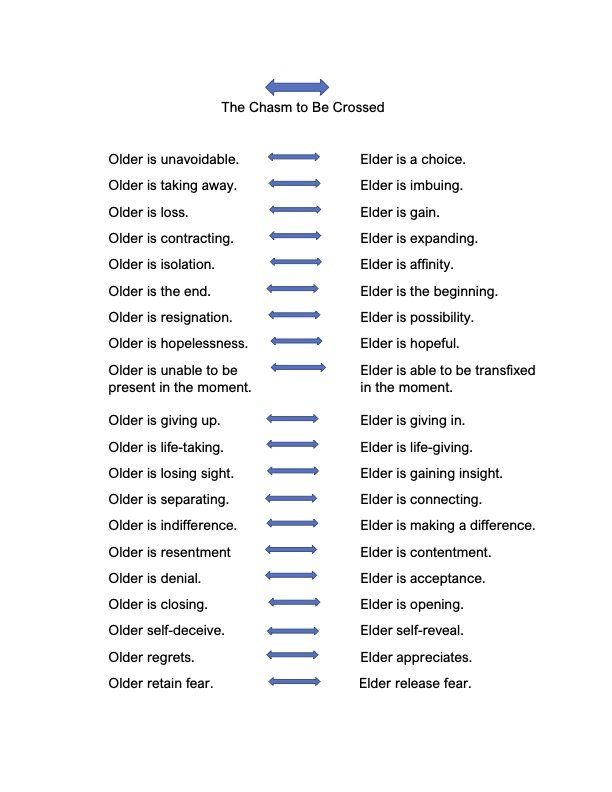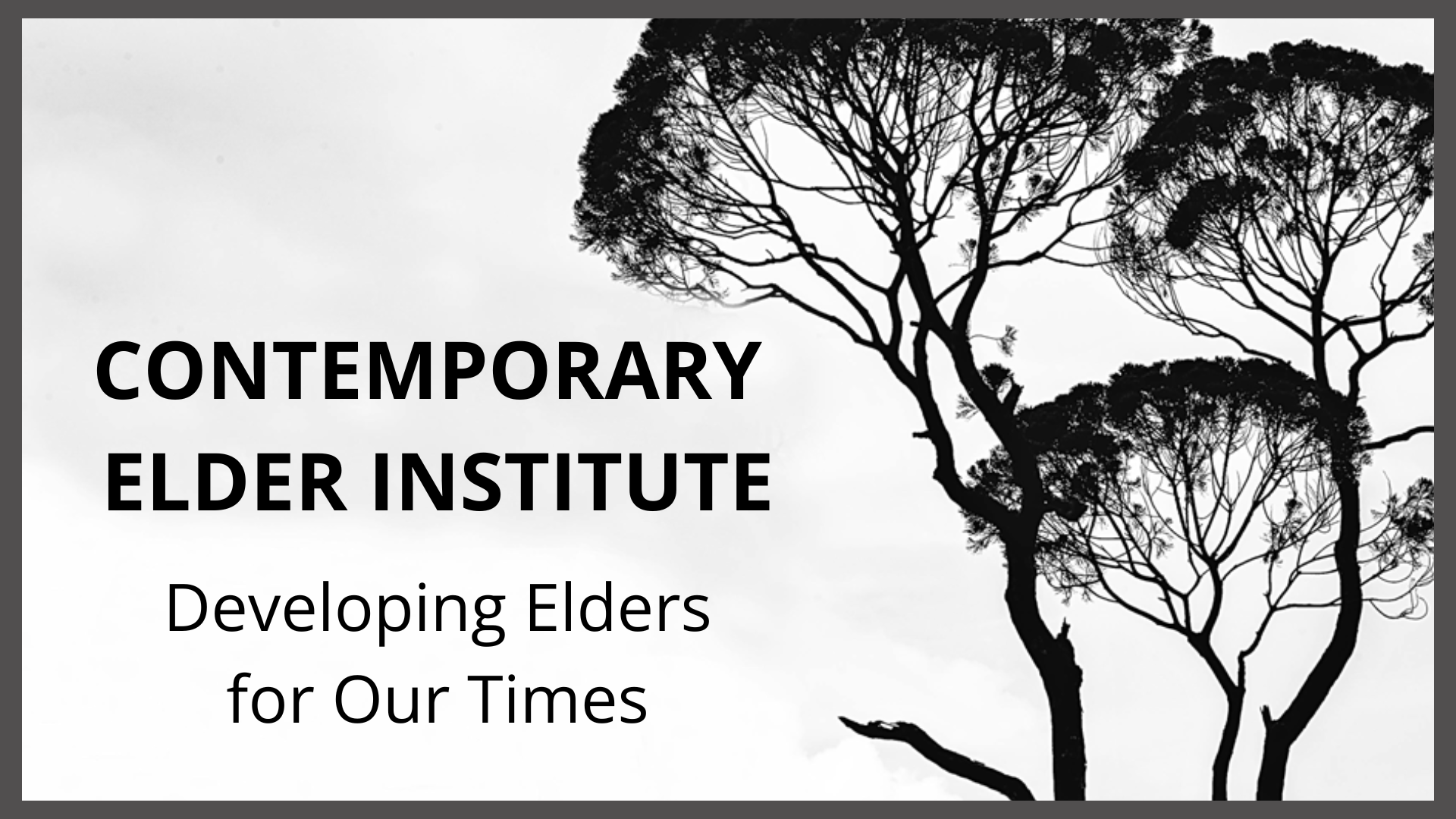ELDER versus OLDER
ELDER versus OLDER
A New Meaning for What It Means to Be an Elder

In our context, older does not mean elder.
For older to become elder, a substantial chasm must be traversed.
To cross this chasm, a transformational bridge requires assembly and then passage.
Transformation is a thorough or dramatic change in form or appearance, a metamorphosis during the life cycle of an animal, or the induced or spontaneous change of one element into another.
Older to elder fits each of these definitions exquisitely.
The design of our transformational bridge is based on an elder becoming highly conscious of a different meaning of elder. Their current meaning of elder was inherited, implanted, and socially veneered. Waters wet. Rocks are hard. Elder are…fill in your blank. Whatever elder is to you didn’t originate with you.
This transformational bridge will take you to a different meaning than the meaning you currently have now. A new distinction has a transformative impact when embodied, personified, and expressed. And that’s the intent. Create a new and empowering distinction of what it means to be an elder. And in our case, a contemporary elder means an elder in these times we find ourselves living. Right here. Right now.
In the older-to-elder transformation, what changes is both “what” and “how” an elder is known – to themselves and the world. A new dynamic. A new perception. A new way of being. A new way to see oneself and the world. A different way to uncover and then heed your higher purpose. Elder thinks, see, and feels differently than older. They are different. They are distinct. A different genus.

Two construction elements are necessary to build this transformational bridge to cross this chasm: the cement and steel of this bridge are self-awareness and a higher purpose.
SELF-AWARENESS
Self-awareness demonstrates your ability to recognize your emotions, thoughts, and values and understand how they impact your behavior.
Self-awareness dissolves self-deception.
Self-awareness encompasses an individual’s ability to assess strengths and limitations accurately.
Renowned psychologist and author Daniel Coleman describes self-awareness in his book “Emotional Intelligence” as knowing one’s internal states, preferences, resources, and intuitions.
According to the CASEL-Aligned Character Development & Social-Emotional Wellness Programs, self-awareness is comprised of five key components:
- Identifying emotions
- Accurate self-perception
- Recognizing strength
- Possessing strong self-confidence
- Possessing self-efficacy
In our contemporary elder model, it’s important to remember there are no good or bad emotions. The only thing that is “good or bad” about emotions is how you act out your feelings which are a product of these emotions.
Your actions will determine the nature of the consequence of your feeling in expressing that emotion. With practice, elders become aware of their emotions and can consciously choose other actions to take that benefit themselves and others.
The hallmark of an elder is the repeated practice of self-awareness. Practice becoming more self-conscious, more self-understanding, and leading elders too much greater self-determination.
The aim of our institute is Gandhi’s quote, “Be the change you want to see in the world.” When this transformational bridge is traversed, the crossing from older to elder can be made. Being in the world as an elder, for the last third of your life, is a highly beneficial life and a far better exit strategy.
The Contemporary Elder’s Theme Song (Recommend viewed on full screen)
https://www.youtube.com/watch?v=yWtd2UEh2hY
For more information about the Contemporary Elder Institute and its work
